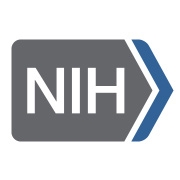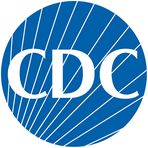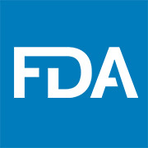A Health Department in Crisis: The Fallout of 10,000 Job Cuts
March 28, 2025, 10:42 am

Location: United States, Maryland, Bethesda
Employees: 10001+
Founded date: 1887

Location: United States, Maryland, Baltimore
Employees: 5001-10000
Founded date: 1977

Location: United States, Georgia, Atlanta
Employees: 10001+
Founded date: 1946
The U.S. Department of Health and Human Services (HHS) is on the brink of a seismic shift. Health and Human Services Secretary Robert F. Kennedy Jr. has announced plans to cut 10,000 jobs. This move is not just a numbers game; it’s a strategic overhaul that could reshape the nation’s health landscape. The cuts come at a time when the country is grappling with significant public health challenges, including a resurgence of measles and the spread of bird flu.
The proposed layoffs will affect key divisions within HHS, including the Food and Drug Administration (FDA), the Centers for Disease Control and Prevention (CDC), and the National Institutes of Health (NIH). These agencies are the backbone of America’s health response, overseeing everything from drug approvals to disease monitoring. The loss of 10,000 jobs represents a quarter of HHS’s workforce, reducing it to 62,000 employees. This is not just a trimming of the fat; it’s a deep cut into the muscle of public health.
Kennedy’s restructuring plan aims to save approximately $1.8 billion annually. However, the implications of these cuts extend far beyond financial savings. The HHS is a $1.7 trillion agency responsible for critical services that millions of Americans rely on, including Medicare and Medicaid. The potential for chaos looms large. With fewer employees, the risk of delays in services and oversight increases. This could lead to gaps in care for vulnerable populations, including seniors and low-income families.
The proposed layoffs include 3,500 positions at the FDA, which is responsible for ensuring the safety of food and drugs. The CDC, tasked with monitoring infectious diseases, will lose 2,400 employees. The NIH, a leader in public health research, will see a reduction of 1,200 jobs. The Centers for Medicare and Medicaid Services (CMS) will cut 300 positions. Each of these agencies plays a vital role in maintaining public health and safety. The loss of personnel raises concerns about the ability to respond effectively to health crises.
Kennedy’s plan also involves consolidating HHS’s 28 divisions into 15. This reorganization aims to centralize functions like human resources and policy-making. A new entity, the Administration for a Healthy America, will combine several existing agencies focused on addiction, mental health, and occupational safety. While the intention is to improve coordination, critics argue that merging diverse agencies may create more confusion than clarity. The needs of regulating food safety differ vastly from those of mental health services.
The timing of these cuts is particularly troubling. The U.S. is currently facing one of the worst measles outbreaks in decades. Public health experts warn that reducing the workforce at the CDC could hinder the nation’s ability to respond to such outbreaks. The ongoing threat of bird flu, which has already impacted poultry and dairy farms, adds another layer of urgency. As the nation’s health infrastructure shrinks, the ability to manage these crises effectively diminishes.
Kennedy’s approach has drawn criticism from various quarters. Some argue that the cuts will lead to a deterioration of essential services. The fear is palpable among HHS employees, many of whom are left in the dark about their job security. An anonymous employee expressed concerns about the uncertainty and the potential for chaos that could ensue from such drastic measures.
Senator Ron Wyden has voiced strong opposition to the layoffs, warning that families will suffer as a result. The cuts threaten to create a vacuum in services that could have deadly consequences for children and seniors. The message is clear: fewer workers mean longer wait times and reduced oversight. This could lead to increased fraud and abuse in health programs, further jeopardizing the health of Americans.
Kennedy’s vision for HHS includes a focus on reversing the chronic disease epidemic. He has pledged to prioritize nutritious food over pharmaceuticals in achieving this goal. However, the means of achieving this vision through massive layoffs and agency closures raises questions about the effectiveness of such a strategy. Critics argue that the inefficiencies in U.S. healthcare are rooted in systemic issues, not merely in the number of employees.
The implications of these cuts extend beyond immediate job losses. They signal a shift in how the federal government views public health. The emphasis on cost-cutting over comprehensive care could have long-term repercussions. As the nation grapples with rising health challenges, the need for a robust and responsive health department has never been more critical.
In conclusion, the decision to cut 10,000 jobs at HHS is a bold and controversial move. It reflects a broader trend of prioritizing budgetary savings over public health needs. As the nation faces ongoing health crises, the effectiveness of this strategy remains to be seen. The cuts may save money in the short term, but the potential for long-term damage to public health infrastructure is a risk that cannot be ignored. The future of American health hangs in the balance, and the stakes have never been higher.
The proposed layoffs will affect key divisions within HHS, including the Food and Drug Administration (FDA), the Centers for Disease Control and Prevention (CDC), and the National Institutes of Health (NIH). These agencies are the backbone of America’s health response, overseeing everything from drug approvals to disease monitoring. The loss of 10,000 jobs represents a quarter of HHS’s workforce, reducing it to 62,000 employees. This is not just a trimming of the fat; it’s a deep cut into the muscle of public health.
Kennedy’s restructuring plan aims to save approximately $1.8 billion annually. However, the implications of these cuts extend far beyond financial savings. The HHS is a $1.7 trillion agency responsible for critical services that millions of Americans rely on, including Medicare and Medicaid. The potential for chaos looms large. With fewer employees, the risk of delays in services and oversight increases. This could lead to gaps in care for vulnerable populations, including seniors and low-income families.
The proposed layoffs include 3,500 positions at the FDA, which is responsible for ensuring the safety of food and drugs. The CDC, tasked with monitoring infectious diseases, will lose 2,400 employees. The NIH, a leader in public health research, will see a reduction of 1,200 jobs. The Centers for Medicare and Medicaid Services (CMS) will cut 300 positions. Each of these agencies plays a vital role in maintaining public health and safety. The loss of personnel raises concerns about the ability to respond effectively to health crises.
Kennedy’s plan also involves consolidating HHS’s 28 divisions into 15. This reorganization aims to centralize functions like human resources and policy-making. A new entity, the Administration for a Healthy America, will combine several existing agencies focused on addiction, mental health, and occupational safety. While the intention is to improve coordination, critics argue that merging diverse agencies may create more confusion than clarity. The needs of regulating food safety differ vastly from those of mental health services.
The timing of these cuts is particularly troubling. The U.S. is currently facing one of the worst measles outbreaks in decades. Public health experts warn that reducing the workforce at the CDC could hinder the nation’s ability to respond to such outbreaks. The ongoing threat of bird flu, which has already impacted poultry and dairy farms, adds another layer of urgency. As the nation’s health infrastructure shrinks, the ability to manage these crises effectively diminishes.
Kennedy’s approach has drawn criticism from various quarters. Some argue that the cuts will lead to a deterioration of essential services. The fear is palpable among HHS employees, many of whom are left in the dark about their job security. An anonymous employee expressed concerns about the uncertainty and the potential for chaos that could ensue from such drastic measures.
Senator Ron Wyden has voiced strong opposition to the layoffs, warning that families will suffer as a result. The cuts threaten to create a vacuum in services that could have deadly consequences for children and seniors. The message is clear: fewer workers mean longer wait times and reduced oversight. This could lead to increased fraud and abuse in health programs, further jeopardizing the health of Americans.
Kennedy’s vision for HHS includes a focus on reversing the chronic disease epidemic. He has pledged to prioritize nutritious food over pharmaceuticals in achieving this goal. However, the means of achieving this vision through massive layoffs and agency closures raises questions about the effectiveness of such a strategy. Critics argue that the inefficiencies in U.S. healthcare are rooted in systemic issues, not merely in the number of employees.
The implications of these cuts extend beyond immediate job losses. They signal a shift in how the federal government views public health. The emphasis on cost-cutting over comprehensive care could have long-term repercussions. As the nation grapples with rising health challenges, the need for a robust and responsive health department has never been more critical.
In conclusion, the decision to cut 10,000 jobs at HHS is a bold and controversial move. It reflects a broader trend of prioritizing budgetary savings over public health needs. As the nation faces ongoing health crises, the effectiveness of this strategy remains to be seen. The cuts may save money in the short term, but the potential for long-term damage to public health infrastructure is a risk that cannot be ignored. The future of American health hangs in the balance, and the stakes have never been higher.
